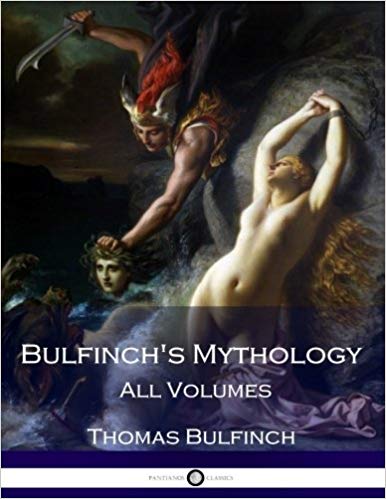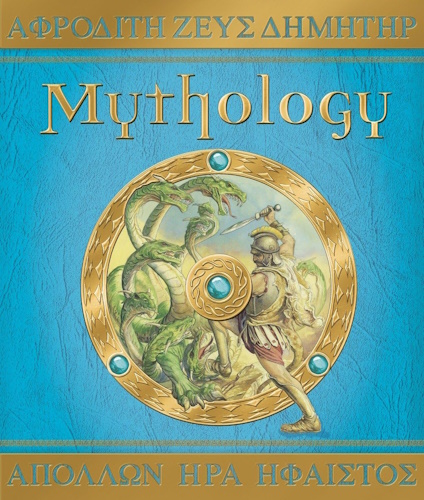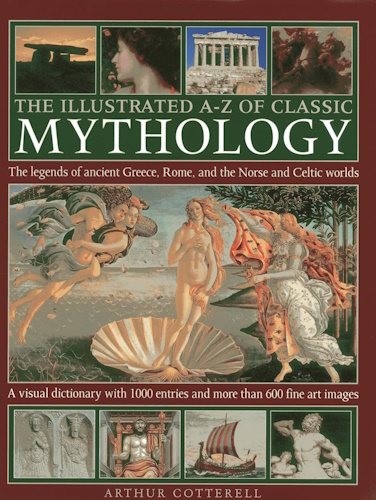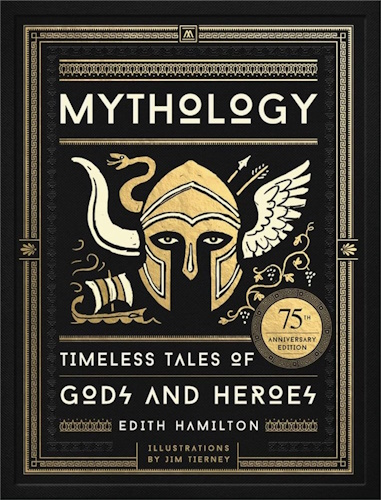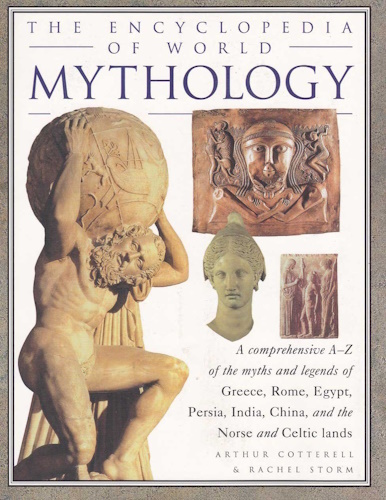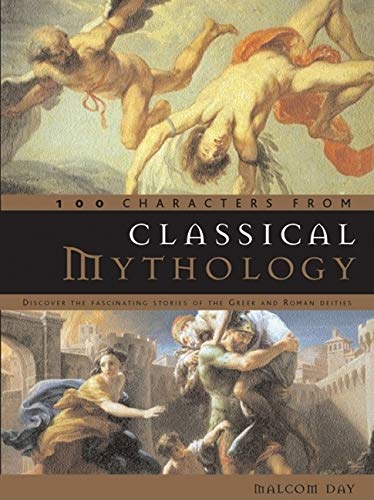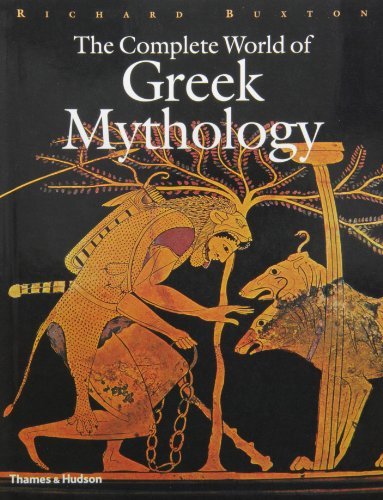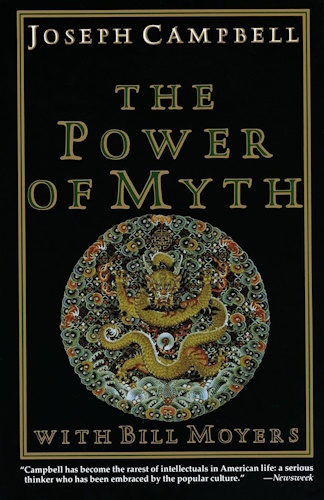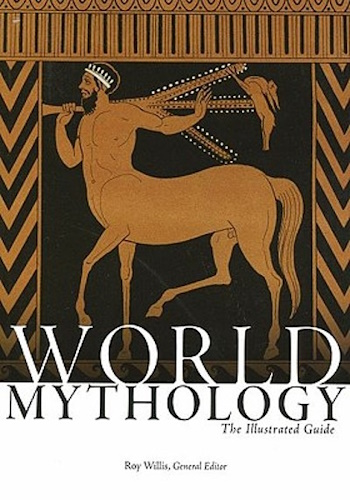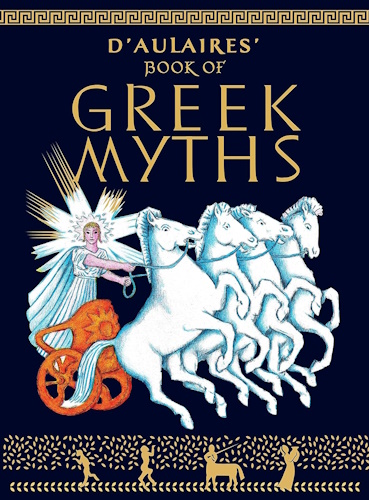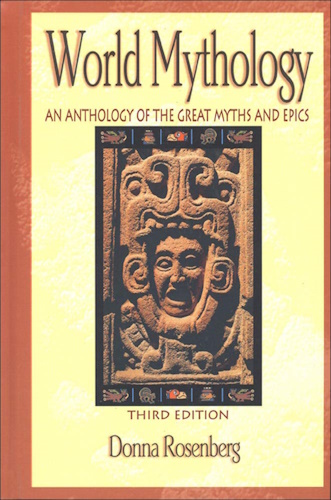
![]()
![]()
CHAPTER XXXIV.
PYTHAGORAS- EGYPTIAN DEITIES- ORACLES.
PYTHAGORAS.
THE teachings of Anchises to AEneas, respecting the nature of the human soul, were in conformity with the doctrines of the Pythagoreans. Pythagoras (born five hundred and forty years B.C.) was a native of the island of Samos, but passed the chief portion of his life at Crotona in Italy. He is therefore sometimes called "the Samian," and sometimes "the philosopher of Crotona." When young he travelled extensively, and it is said visited Egypt, where he was instructed by the priests in all their learning, and afterwards journeyed to the East, and visited the Persian and Chaldean Magi, and the Brahmins of India.
At Crotona, where he finally established himself, his extraordinary qualities collected round him a great number of disciples. The inhabitants were notorious for luxury and licentiousness, but the good effects of his influence were soon visible. Sobriety and temperance succeeded. Six hundred of the inhabitants became his disciples and enrolled themselves in a society to aid each other in the pursuit of wisdom, uniting their property in one common stock for the benefit of the whole. They were required to practise the greatest purity and simplicity of manners. The first lesson they learned was silence; for a time they were required to be only hearers. "He [Pythagoras] said so" (Ipse dixit), was to be held by them as sufficient, without any proof. It was only the advanced pupils, after years of patient submission, who were allowed to ask questions and to state objections.
Pythagoras considered numbers as the essence and principle of all things, and attributed to them a real and distinct existence; so that, in his view, they were the elements out of which the universe was constructed. How he conceived this process has never been satisfactorily explained. He traced the various forms and phenomena of the world to numbers as their basis and essence. The "Monad" or unit he regarded as the source of all numbers. The number Two was imperfect, and the cause of increase and division. Three was called the number of the whole because it had a beginning, middle, and end. Four, representing the square, is in the highest degree perfect; and Ten, as it contains the sum of the four prime numbers, comprehends all musical and arithmetical proportions, and denotes the system of the world.
As the numbers proceed from the monad, so he regarded the pure and simple essence of the Deity as the source of all the forms of nature. Gods, demons, and heroes are emanations of the Supreme, and there is a fourth emanation, the human soul. This is immortal, and when freed from the fetters of the body passes to the habitation of the dead, where it remains till it returns to the world, to dwell in some other human or animal body, and at last, when sufficiently purified, it returns to the source from which it proceeded. This doctrine of the transmigration of souls (metempsychosis), which was originally Egyptian and connected with the doctrine of reward and punishment of human actions, was the chief cause why the Pythagoreans killed no animals. Ovid represents Pythagoras addressing his disciples in these words: "Souls never die, but always on quitting one abode pass to another. I myself can remember that in the time of the Trojan war I was Euphorbus, the son of Panthus, and fell by the spear of Menelaus. Lately being in the temple of Juno, at Argos, I recognized my shield hung up there among the trophies. All things change, nothing perishes. The soul passes hither and thither, occupying now this body, now that, passing from the body of a beast into that of a man, and thence to a beast's again. As wax is stamped with certain figures, then melted, then stamped anew with others, yet is always the same wax, so the soul, being always the same, yet wears, at different times, different forms. Therefore, if the love of kindred is not extinct in your bosoms, forbear, I entreat you, to violate the life of those who may haply be your own relatives."
Shakespeare, in the "Merchant of Venice," makes Gratiano allude to the metempsychosis, where he says to Shylock:
"Thou almost mak'st me waver in my faith,To hold opinion with Pythagoras,
That souls of animals infuse themselves
Into the trunks of men; thy currish spirit
Governed a wolf, who, hanged for human slaughter,
Infused his soul in thee; for thy desires
Are wolfish, bloody, starved and ravenous."
The relation of the notes of the musical scale to numbers, whereby harmony results from vibrations in equal times, and discord from the reverse, led Pythagoras to apply the word "harmony" to the visible creation, meaning by it the just adaptation of parts to each other. This is the idea which Dryden expresses in the beginning of his "Song for St. Cecilia's Day":
"From harmony, from heavenly harmonyThis everlasting frame began;
From harmony to harmony
Through all the compass of the notes it ran,
The Diapason closing full in Man."
In the centre of the universe (he taught) there was a central fire, the principle of life. The central fire was surrounded by the earth, the moon, the sun, and the five planets. The distances of the various heavenly bodies from one another were conceived to correspond to the proportions of the musical scale. The heavenly bodies, with the gods who inhabited them, were supposed to perform a choral dance round the central fire, "not without song." It is this doctrine which Shakespeare alludes to when he makes Lorenzo teach astronomy to Jessica in this fashion:
"Look, Jessica, see how the floor of heavenIs thick inlaid with patines of bright gold!
There's not the smallest orb that thou behold'st
But in his motion like an angel sings,
Still quiring to the young-eyed cherubim;
Such harmony is in immortal souls!
But whilst this muddy vesture of decay
Doth grossly close it in we cannot hear it."
Merchant of Venice.
The spheres were conceived to be crystalline or glassy fabrics arranged over one another like a nest of bowls reversed. In the substance of each sphere one or more of the heavenly bodies was supposed to be fixed, so as to move with it. As the spheres are transparent we look through them and see the heavenly bodies which they contain and carry round with them. But as these spheres cannot move on one another without friction, a sound is thereby produced which is of exquisite harmony, too fine for mortal ears to recognize. Milton, in his "Hymn on the Nativity," thus alludes to the music of the spheres:
"Ring out, ye crystal spheres!Once bless our human ears
(If ye have power to charm our senses so);
And let your silver chime
Move in melodious time;
And let the bass of Heaven's deep organ blow;
And with your ninefold harmony
Make up full concert to the angelic symphony."
Pythagoras is said to have invented the lyre. Our own poet Longfellow, in "Verses to a Child," thus relates the story:
"As great Pythagoras of yore,Standing beside the blacksmith's door,
And hearing the hammers as they smote
The anvils with a different note,
Stole from the varying tones that hung
Vibrant on every iron tongue,
The secret of the sounding wire,
And formed the seven-chorded lyre."
See also the same poet's "Occultation of Orion"-
"The Samian's great AEolian lyre."SYBARIS AND CROTONA.
Sybaris, a neighbouring city to Crotona, was as celebrated for luxury and effeminacy as Crotona for the reverse. The name has become proverbial. J. R. Lowell uses it in this sense in his charming little poem "To the Dandelion":
"Not in mid June the golden-cuirassed beeFeels a more summer-like, warm ravishment
In the white lily's breezy tent
(His conquered Sybaris) than I when first
From the dark green thy yellow circles burst."
A war arose between the two cities, and Sybaris was conquered and destroyed. Milo, the celebrated athlete, led the army of Crotona. Many stories are told of Milo's vast strength, such as his carrying a heifer of four years old upon his shoulders and afterwards eating the whole of it in a single day. The mode of his death is thus related: As he was passing through a forest he saw the trunk of a tree which had been partially split open by wood-cutters, and attempted to rend it further; but the wood closed upon his hands and held him fast, in which state he was attacked and devoured by wolves.
Byron, in his "Ode to Napoleon Bonaparte," alludes to the story of Milo:
"He who of old would rend the oakDeemed not of the rebound;
Chained by the trunk he vainly broke,
Alone, how looked he round!"
EGYPTIAN DEITIES.
The Egyptians acknowledged as the highest deity Amun, afterwards called Zeus, or Jupiter Ammon. Amun manifested himself in his word or will, which created Kneph and Athor, of different sexes. From Kneph and Athor proceeded Osiris and Isis. Osiris was worshipped as the god of the sun, the source of warmth, life, and fruitfulness, in addition to which he was also regarded as the god of the Nile, who annually visited his wife, Isis (the Earth), by means of an inundation. Serapis or Hermes is sometimes represented as identical with Osiris, and sometimes as a distinct divinity, the ruler of Tartarus and god of medicine. Anubis is the guardian god, represented with a dog's head, emblematic of his character of fidelity and watchfulness. Horus or Harpocrates was the son of Osiris. He is represented seated on a Lotus flower, with his finger on his lips, as the god of Silence.
In one of Moore's "Irish Melodies" is an allusion to Harpocrates:
"Thyself shall, under some rosy bower,Sit mute, with thy finger on thy lip;
Like him, the boy, who born among
The flowers that on the Nile-stream blush,
Sits ever thus,- his only song
To Earth and Heaven, 'Hush all, hush!"
MYTH OF OSIRIS AND ISIS.
Osiris and Isis were at one time induced to descend to the earth to bestow gifts and blessings on its inhabitants. Isis showed them first the use of wheat and barley, and Osiris made the instruments of agriculture and taught men the use of them, as well as how to harness the ox to the plough. He then gave men laws, the institution of marriage, a civil organization, and taught them how to worship the gods. After he had thus made the valley of the Nile a happy country, he assembled a host with which he went to bestow his blessings upon the rest of the world. He conquered the nations everywhere, but not with weapons, only with music and eloquence. His brother, Typhon saw this, and filled with envy and malice sought during his absence to usurp his throne. But Isis, who held the reins of government, frustrated his plans. Still more embittered, he now resolved to kill his brother. This he did in the following manner: Having organized a conspiracy of seventy-two members, he went with them to the feast which was celebrated in honour of the king's return. He then caused a box or chest to be brought in, which had been made to fit exactly the size of Osiris, and declared that he would give that chest of precious wood to whomsoever could get into it. The rest tried in vain, but no sooner was Osiris in it than Typhon and his companions closed the lid and flung the chest into the Nile. When Isis heard of the cruel murder she wept and mourned, and then with her hair shorn, clothed in black and beating her breast, she sought diligently for the body of her husband. In this search she was materially assisted by Anubis, the son of Osiris and Nephthys. They sought in vain for some time; for when the chest, carried by the waves to the shores of Byblos, had become entangled in the reeds that grew at the edge of the water, the divine power that dwelt in the body of Osiris imparted such strength to the shrub that it grew into a mighty tree, enclosing in its trunk the coffin of the god. This tree with its sacred deposit was shortly after felled, and erected as a column in the palace of the king of Phoenicia. But at length by the aid of Anubis and the sacred birds, Isis ascertained these facts, and then went to the royal city. There she offered herself at the palace as a servant, and being admitted, threw off her disguise and appeared as the goddess, surrounded with thunder and lightning. Striking the column with her wand she caused it to split open and give up the sacred coffin. This she seized and returned with it, and concealed it in the depth of a forest, but Typhon discovered it, and cutting the body into fourteen pieces scattered them hither and thither. After a tedious search, Isis found thirteen pieces, the fishes of the Nile having eaten the other. This she replaced by an imitation of sycamore wood, and buried the body at Philoe, which became ever after the great burying place of the nation, and the spot to which pilgrimages were made from all parts of the country. A temple of surpassing magnificence was also erected there in honour of the god, and at every place where one of his limbs had been found minor temples and tombs were built to commemorate the event. Osiris became after that the tutelar deity of the Egyptians. His soul was supposed always to inhabit the body of the bull Apis, and at his death to transfer itself to his successor.
Apis, the Bull of Memphis, was worshipped with the greatest reverence by the Egyptians. The individual animal who was held to be Apis was recognized by certain signs. It was requisite that he should be quite black, have a white square mark on the forehead, another, in the form of an eagle, on his back, and under his tongue a lump somewhat in the shape of a scarabaeus or beetle. As soon as a bull thus marked was found by those sent in search of him, he was placed in a building facing the east, and was fed with milk for four months. At the expiration of this term the priests repaired at new moon, with great pomp, to his habitation and saluted him Apis. He was placed in a vessel magnificently decorated and conveyed down the Nile to Memphis, where a temple, with two chapels and a court for exercise, was assigned to him. Sacrifices were made to him, and once every year, about the time when the Nile began to rise, a golden cup was thrown into the river, and a grand festival was held to celebrate his birthday. The people believed that during this festival the crocodiles forgot their natural ferocity and became harmless. There was, however, one drawback to his happy lot: he was not permitted to live beyond a certain period, and if, when he had attained the age of twenty-five years, he still survived, the priests drowned him in the sacred cistern and then buried him in the temple of Serapis. On the death of this bull, whether it occurred in the course of nature or by violence, the whole land was filled with sorrow and lamentations, which lasted until his successor was found.
We find the following item in one of the newspapers of the day:
"The Tomb of Apis.- The excavations going on at Memphis bid fair to make that buried city as interesting as Pompeii. The monster tomb of Apis is now open, after having lain unknown for centuries."
Milton, in his "Hymn on the Nativity," alludes to the Egyptian deities, not as imaginary beings, but as real demons, put to flight by the coming of Christ.
"The brutish gods of Nile as fast,Isis and Horus and the dog Anubis haste.
Nor is Osiris seen
In Memphian grove or green
Trampling the unshowered* grass with lowings loud;
Nor can he be at rest
Within his sacred chest;
Nought but profoundest hell can be his shroud.
In vain with timbrel'd anthems dark
The sable-stoled sorcerers bear his worshipped ark."
* There being no rain in Egypt, the grass is "unshowered," and the country depends for its fertility upon the overflowings of the Nile. The ark alluded to in the last line is shown by pictures still remaining on the walk of the Egyptian temple to have been borne by the priests in their religious processions. It probable represented the chest in which Osiris was placed.
Isis was represented in statuary with the head veiled, a symbol of mystery. It is this which Tennyson alludes to in "Maud," IV. 8:
"For the drift of the Maker is dark, an Isis hid by the veil," etc.
ORACLES.
Oracle was the name used to denote the place where answers were supposed to be given by any of the divinities to those who consulted them respecting the future. The word was also used to signify the response which was given.
The most ancient Grecian oracle was that of Jupiter at Dodona. According to one account, it was established in the following manner: Two black doves took their flight from Thebes in Egypt. One flew to Dodona in Epirus, and alighting in a grove of oaks, it proclaimed in human language to the inhabitants of the district that they must establish there an oracle of Jupiter. The other dove flew to the temple of Jupiter Ammon in the Libyan Oasis, and delivered a similar command there. Another account is, that they were not doves, but priestesses, who were carried off from Thebes in Egypt by the Phoenicians, and set up oracles at the Oasis and Dodona. The responses of the oracle were given from the trees, by the branches rustling in the wind, the sounds being interpreted by the priests.
But the most celebrated of the Grecian oracles was that of Apollo at Delphi, a city built on the slopes of Parnassus in Phocis.
It had been observed at a very early period that the goats feeding on Parnassus were thrown into convulsions when they approached a certain long deep cleft in the side of the mountain. This was owing to a peculiar vapour arising out of the cavern, and one of the goatherds was induced to try its effects upon himself. Inhaling the intoxicating air, he was affected in the same manner as the cattle had been, and the inhabitants of the surrounding country, unable to explain the circumstance, imputed the convulsive ravings to which he gave utterance while under the power of the exhalations to a divine inspiration. The fact was speedily circulated widely, and a temple was erected on the spot. The prophetic influence was at first variously attributed to the goddess Earth, to Neptune, Themis, and others, but it was at length assigned to Apollo, and to him alone. A priestess was appointed whose office it was to inhale the hallowed air, and who was named the Pythia. She was prepared for this duty by previous ablution at the fountain of Castalia, and being crowned with laurel was seated upon a tripod similarly adorned, which was placed over the chasm whence the divine afflatus proceeded. Her inspired words while thus situated were interpreted by the priests.
ORACLE OF TROPHONIUS.
Besides the oracles of Jupiter and Apollo, at Dodona and Delphi, that of Trophonius in Boeotia was held in high estimation. Trophonius and Agamedes were brothers. They were distinguished architects, and built the temple of Apollo at Delphi, and a treasury for King Hyrieus. In the wall of the treasury they placed a stone, in such a manner that it could be taken out; and by this means, from time to time, purloined the treasure. This amazed Hyrieus, for his locks and seals were untouched, and yet his wealth continually diminished. At length he set a trap for the thief and Agamedes was caught.
Trophonius, unable to extricate him, and fearing that when found he would be compelled by torture to discover his accomplice, cut off his head. Trophonius himself is said to have been shortly afterwards swallowed up by the earth.
The oracle of Trophonius was at Lebadea in Boeotia. During a great drought the Boeotians, it is said, were directed by the god at Delphi to seek aid of Trophonius at Lebadea. They came thither, but could find no oracle. One of them, however, happening to see a swarm of bees, followed them to a chasm in the earth, which proved to be the place sought.
Peculiar ceremonies were to be performed by the person who came to consult the oracle. After these preliminaries, he descended into the cave by a narrow passage. This place could be entered only in the night. The person returned from the cave by the same narrow passage, but walking backwards. He appeared melancholy and dejected; and hence the proverb which was applied to a person low-spirited and gloomy, "He has been consulting the oracle of Trophonius."
ORACLE OF AESCULAPIUS.
There were numerous oracles of AEsculapius, but the most celebrated one was at Epidaurus. Here the sick sought responses and the recovery of their health by sleeping in the temple. It has been inferred from the accounts that have come down to us that the treatment of the sick resembled what is now called Animal Magnetism or Mesmerism.
Serpents were sacred to AEsculapius, probably because of a superstition that those animals have a faculty of renewing their youth by a change of skin.
The worship of AEsculapius was introduced into Rome in a time of great sickness, and an embassy sent to the temple of Epidaurus to entreat the aid of the god. AEsculapius was propitious and on the return of the ship accompanied it in the form of a serpent. Arriving in the river Tiber, the serpent glided from the vessel and took possession of an island in the river, and a temple was there erected to his honour.
ORACLE OF APIS.
At Memphis the sacred bull Apis gave answer to those who consulted him by the manner in which he received or rejected what was presented to him. If the bull refused food from the hand of the inquirer it was considered an unfavourable sign, and the contrary when he received it.
It has been a question whether oracular responses ought to be ascribed to mere human contrivance or to the agency of evil spirits. The latter opinion has been most general in past ages. A third theory has been advanced since the phenomena of Mesmerism have attracted attention, that something like the mesmeric trance was induced in the Pythoness, and the faculty of clairvoyance really called into action.
Another question is as to the time when the Pagan oracles ceased to give responses. Ancient Christian writers assert that they became silent at the birth of Christ, and were heard no more after that date. Milton adopts this view in his "Hymn on the Nativity," and in lines of solemn and elevated beauty pictures the consternation of the heathen idols at the advent of the Saviour:
"The oracles are dumb;No voice or hideous hum
Rings through the arched roof in words deceiving.
Apollo from his shrine
Can no more divine,
With hollow shriek the steep of Delphos leaving.
No nightly trance or breathed spell
Inspires the pale-eyed priest from the prophetic cell."
In Cowper's poem of "Yardley Oak" there are some beautiful mythological allusions. The former of the two following is to the fable of Castor and Pollux; the latter is more appropriate to our present subject. Addressing the acorn he says,
"Thou fell'st mature; and in the loamy clod,Swelling with vegetative force instinct,
Didst burst thine egg, as theirs the fabled Twins
Now stars; two lobes protruding, paired exact;
A leaf succeeded and another leaf,
And, all the elements thy puny growth
Fostering propitious, thou becam'st a twig.
Who lived when thou wast such? O, couldst thou speak,
As in Dodona once thy kindred trees
Oracular, I would not curious ask
The future, best unknown, but at thy mouth
Inquisitive, the less ambiguous past."
Tennyson, in his "Talking Oak," alludes to the oaks of Dodona in these lines:
"And I will work in prose and rhyme,And praise thee more in both
Than bard has honored beech or lime,
Or that Thessalian growth
In which the swarthy ring-dove sat
And mystic sentence spoke;" etc.
Byron alludes to the oracle of Delphi where, speaking of Rousseau, whose writings he conceives did much to bring on the French revolution, he says,
"For then he was inspired, and from him came,As from the Pythian's mystic cave of yore,
Those oracles which set the world in flame,
Nor ceased to burn till kingdoms were no more."
-
Urantia Book, 44:0.11 - The Celestial Artisans
Never in your long ascendancy will you lose the power to recognize your associates of former existences. Always, as you ascend inward in the scale of life, will you retain the ability to recognize and fraternize with the fellow beings of your previous and lower levels of experience. Each new translation or resurrection will add one more group of spirit beings to your vision range without in the least depriving you of the ability to recognize your friends and fellows of former estates.
-
Princess Bride 1987 Wallace Shawn (Vizzini) and Mandy Patinkin (Inigo Montoya)
Vizzini: HE DIDN'T FALL? INCONCEIVABLE.
Inigo Montoya: You keep using that word. I do not think it means what you think it means. -
Urantia Book, 117:4.14 - The Finite God
And here is mystery: The more closely man approaches God through love, the greater the reality -- actuality -- of that man. The more man withdraws from God, the more nearly he approaches nonreality -- cessation of existence. When man consecrates his will to the doing of the Father's will, when man gives God all that he has, then does God make that man more than he is.
-
Urantia Book, 167:7.4 - The Talk About Angels
"And do you not remember that I said to you once before that, if you had your spiritual eyes anointed, you would then see the heavens opened and behold the angels of God ascending and descending? It is by the ministry of the angels that one world may be kept in touch with other worlds, for have I not repeatedly told you that I have other sheep not of this fold?"
-
Urantia Book, Foreword - 0:12.12 - The Trinities
But we know that there dwells within the human mind a fragment of God, and that there sojourns with the human soul the Spirit of Truth; and we further know that these spirit forces conspire to enable material man to grasp the reality of spiritual values and to comprehend the philosophy of universe meanings. But even more certainly we know that these spirits of the Divine Presence are able to assist man in the spiritual appropriation of all truth contributory to the enhancement of the ever-progressing reality of personal religious experience—God-consciousness.
-
Urantia Book, 1:4.3 - The Mystery Of God
When you are through down here, when your course has been run in temporary form on earth, when your trial trip in the flesh is finished, when the dust that composes the mortal tabernacle "returns to the earth whence it came"; then, it is revealed, the indwelling "Spirit shall return to God who gave it." There sojourns within each moral being of this planet a fragment of God, a part and parcel of divinity. It is not yet yours by right of possession, but it is designedly intended to be one with you if you survive the mortal existence.
-
Urantia Book, 1:4.1 - The Mystery Of God
And the greatest of all the unfathomable mysteries of God is the phenomenon of the divine indwelling of mortal minds. The manner in which the Universal Father sojourns with the creatures of time is the most profound of all universe mysteries; the divine presence in the mind of man is the mystery of mysteries.
-
Urantia Book, 1:4.6 - The Mystery Of God
To every spirit being and to every mortal creature in every sphere and on every world of the universe of universes, the Universal Father reveals all of his gracious and divine self that can be discerned or comprehended by such spirit beings and by such mortal creatures. God is no respecter of persons, either spiritual or material. The divine presence which any child of the universe enjoys at any given moment is limited only by the capacity of such a creature to receive and to discern the spirit actualities of the supermaterial world.
-
Urantia Book, 11:0.1 - The Eternal Isle Of Paradise
Paradise is the eternal center of the universe of universes and the abiding place of the Universal Father, the Eternal Son, the Infinite Spirit, and their divine co-ordinates and associates. This central Isle is the most gigantic organized body of cosmic reality in all the master universe. Paradise is a material sphere as well as a spiritual abode. All of the intelligent creation of the Universal Father is domiciled on material abodes; hence must the absolute controlling center also be material, literal. And again it should be reiterated that spirit things and spiritual beings are real.
-
Urantia Book, 50:6.4 - Planetary Culture
Culture presupposes quality of mind; culture cannot be enhanced unless mind is elevated. Superior intellect will seek a noble culture and find some way to attain such a goal. Inferior minds will spurn the highest culture even when presented to them ready-made.
-
Urantia Book, 54:1.6 - True And False Liberty
True liberty is the associate of genuine self-respect; false liberty is the consort of self-admiration. True liberty is the fruit of self-control; false liberty, the assumption of self-assertion. Self-control leads to altruistic service; self-admiration tends towards the exploitation of others for the selfish aggrandizement of such a mistaken individual as is willing to sacrifice righteous attainment for the sake of possessing unjust power over his fellow beings.
-
Urantia Book, 54:1.9 - True And False Liberty
How dare the self-willed creature encroach upon the rights of his fellows in the name of personal liberty when the Supreme Rulers of the universe stand back in merciful respect for these prerogatives of will and potentials of personality! No being, in the exercise of his supposed personal liberty, has a right to deprive any other being of those privileges of existence conferred by the Creators and duly respected by all their loyal associates, subordinates, and subjects.
-
Urantia Book, 54:1.8 - True And False Liberty
There is no error greater than that species of self-deception which leads intelligent beings to crave the exercise of power over other beings for the purpose of depriving these persons of their natural liberties. The golden rule of human fairness cries out against all such fraud, unfairness, selfishness, and unrighteousness.
